One of the signature dishes of South Louisiana cuisine, Jambalaya is a heartwarming amalgamation of flavors, of which, properly prepared, no single ingredient predominate. This classic Louisiana rice dish captures wonderful Creole and Cajun flavors and is often imitated, but rarely duplicated, outside of Louisiana. This is Sweet Daddy D’s Cajun Jambalaya made with pork, sausage, and chicken. Judging from the result, you won’t believe that it is really simple and no-angst. Perfect for a crowd, too!
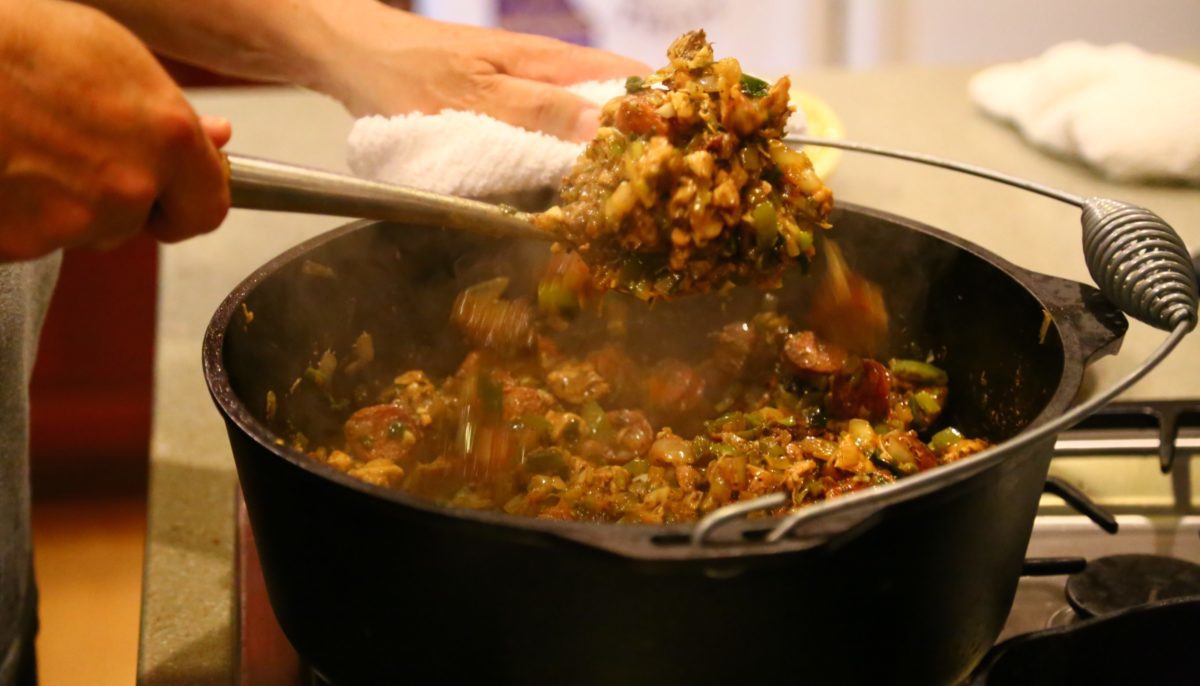
If you want to just skip to the recipe, click the "Jump To Recipe" button above or the Recipe link below and you’ll go right there without having to scroll through my article.
This post is not sponsored, but you will find affiliate links on this page. As an Amazon Associate, I earn from qualifying purchases. The price you pay as a consumer does not change, but I may make a small commission based on your purchase.
Jump to:
What is Jambalaya?
Jambalaya is a highly-seasoned rice dish made with a flavorful mixture of proteins-pork, chicken, sausage, beef, or seafood. At its base is the Holy Trinity and common South Louisiana Herbs and Spices, cooked in a rich stock while long-grain rice absorbs all those wonderful flavors. Its deep South Louisiana roots date back to the 1700s when Spanish settlers adapted ingredients readily available in South Louisiana to their paella. It was further influenced by French settlers and African cooks with the introduction of ham, regional seafood, and sometimes tomatoes.
Where does the name come from? The name Jambalaya comes from the French word for ham, ”jambon”, plus the African “ya” meaning rice, and the Acadian phrase “à la” (meaning “in the style of”).
Economical to make and perfect for a large crowd, jambalaya can be cooked indoors or outdoors with much the same equipment as a crawfish boil or a fish fry. This makes it a perfect dish for the South Louisiana culture where gathering groups of friends and family together for parties (such as a football watch party, tailgate parties, or any reason to gather whatsoever) is commonplace. Jambalaya's popularity as a pillar of Louisiana cuisine is recognized by one of Louisiana's greatest annual festivals. Every (non-Covid) year since 1967, friends, families, and tourists from around the world converge on Gonzales, Louisiana, the Jambalaya Capital of the World, to soak up rich Louisiana food and music and to see the World Jambalaya Cooking Champion crowned at the annual Jambalaya Festival.
Here’s What You Need
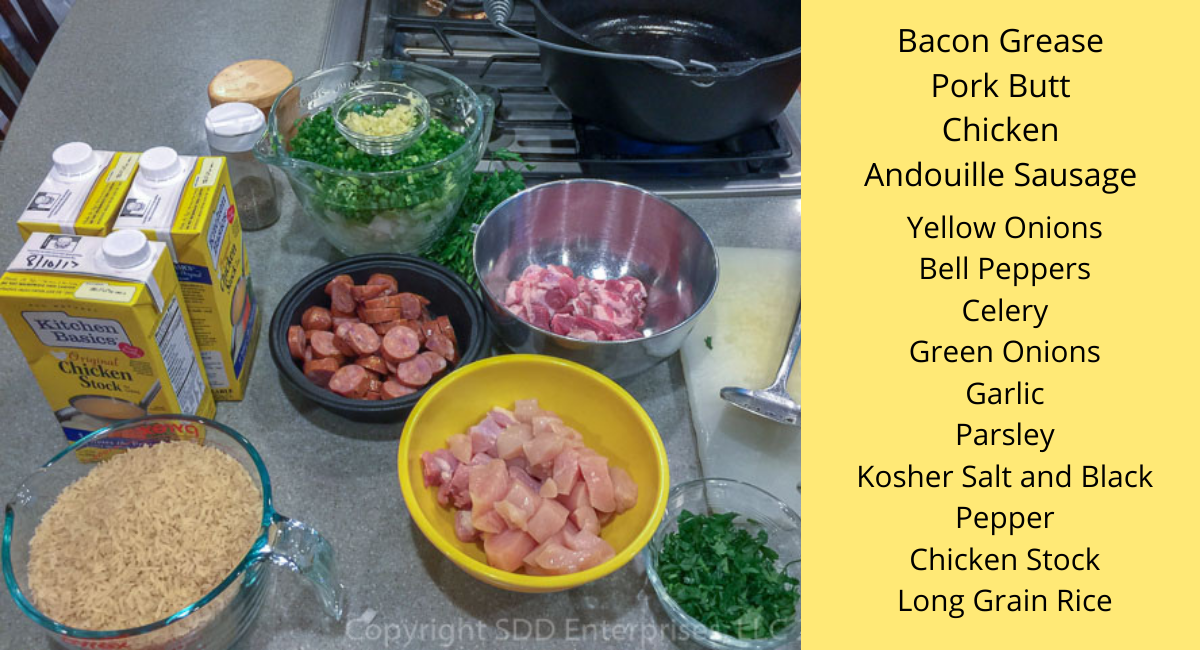
Sweet Daddy D's Homemade Chicken Stock is a great alternative to commercial stock.
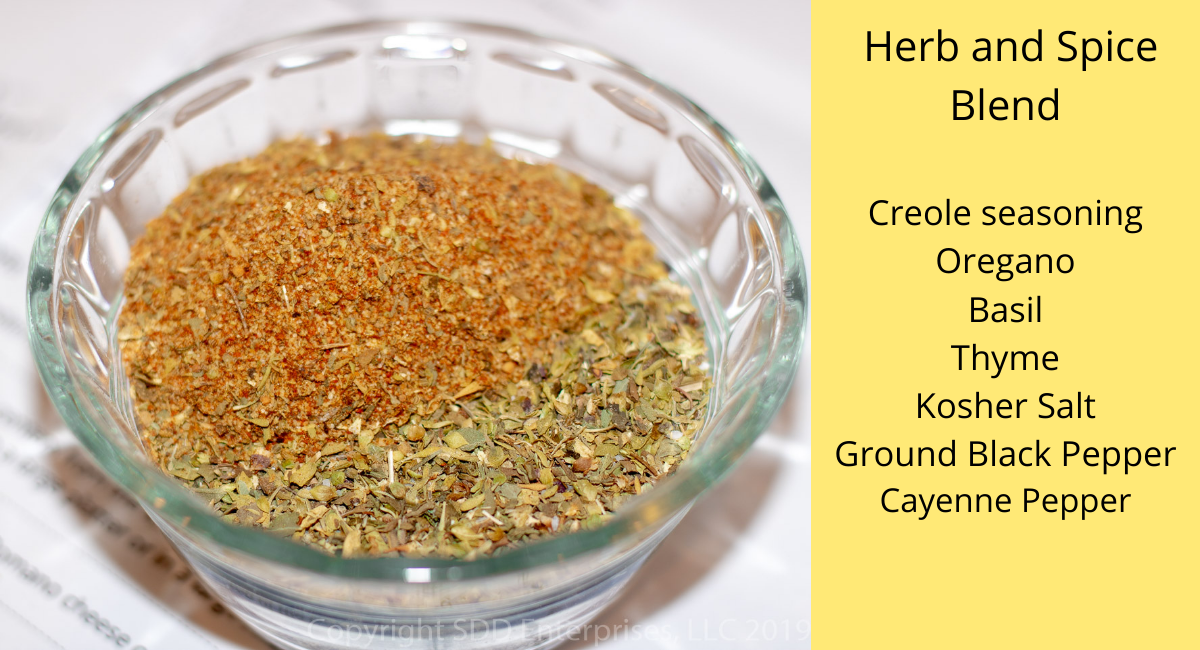

Here are some products that you can use in making this Cajun Jambalaya:
This post is not sponsored, but you will find affiliate links on this page. As an Amazon Associate, I earn from qualifying purchases. The price you pay as a consumer does not change, but I may make a small commission based on your purchase.
Andouille Sausage, Chicken Stock, Long Grain Rice
Dutch oven, Chef's knives, Cambro prep bowls, Glass prep bowls, Measuring cups, Glass measuring cups, Measuring spoons, Cutting boards
Here’s What You Do
First ...You Have a Beer. The best way to make it no-angst is to be prepared. Pop open a beer, have a seat, and read the recipe all the way through. This is part of your mise en place and will show you what you need and what you need to do each step of the way. Getting all your ingredients together and prepped before you start will make it much easier and takes the angst away. The idea is to not only chop and measure everything but to prepare the ingredients to make them easier to use. Group the ingredients according to how they are added to the pot so that it becomes a process of assembling the recipe in stages. The immense flavor and color are derived through the various browning stages which build one upon the other. But just remember, it’s cooking, it’s not brain surgery. Chill, have fun with it, experiment with it-the only way to screw it up is to burn it.
Prep the Ingredients
What happens in this step: The goal is to have all your ingredients prepped so all you have to do is assemble the recipe and concentrate on the method.
Cut your pork and chicken into about 1” cubes and slice the sausage into medallions about ¼” thick; set the meat aside in separate bowls.
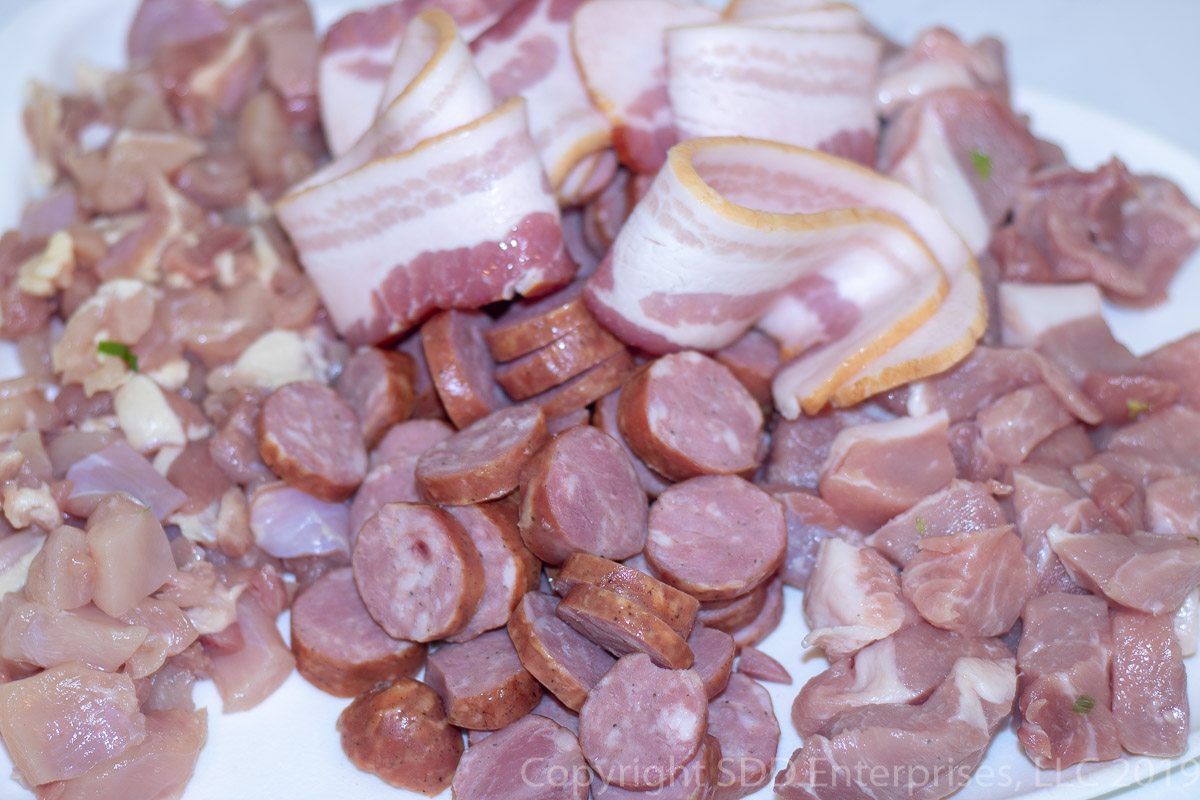
Chop your veggies (the Trinity and the green onions) and place them in a bowl; your chopped garlic and parsley should be placed in separate small bowls. Mix the Herb and Spice Blend (except the salt which you should add separately) in a small bowl and set aside. Set out the bacon grease or bacon, the stock, and measure the uncooked rice.
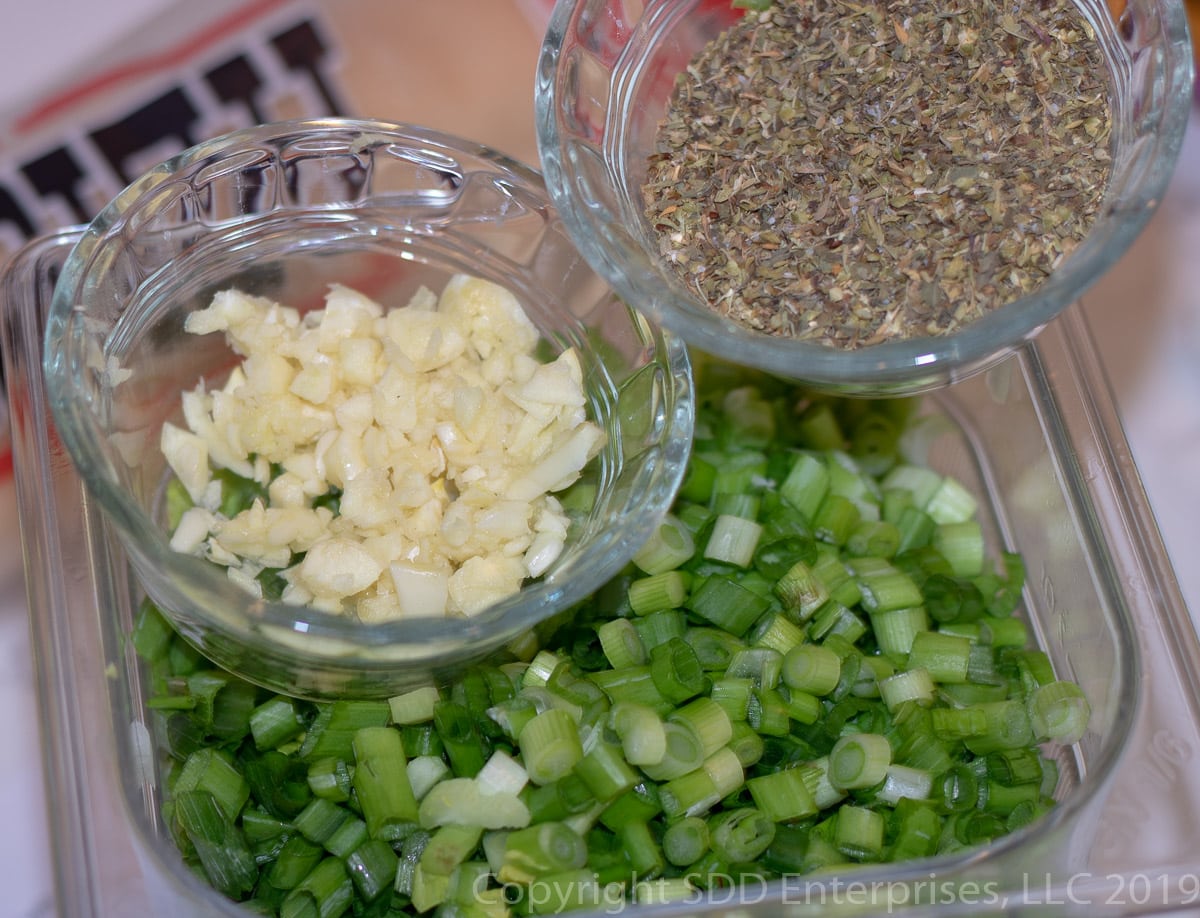
Brown and Render the Meats
What happens in this step: Cajun Jambalaya's rich color and deep flavor are built in layers starting with this very first step of rendering the fat from the meats. This not only provides fat to fry the vegetables, but it also lays down the color that will permeate the entire recipe.
Start building the delicious flavor and the nice brown color that good Cajun Jambalaya should have. A heavy cast iron pan will distribute the heat very well, so it’s not necessary to start with high heat. Start with medium heat and give it time to get up to temperature. If using bacon (as opposed to bacon grease), start it out in a cold pan, bacon fat can be added to a heated pan. Fry the bacon to render the fat or heat the bacon grease over medium heat until it shimmers. When the bacon fat is rendered, add the cubed pork and let it start to brown.
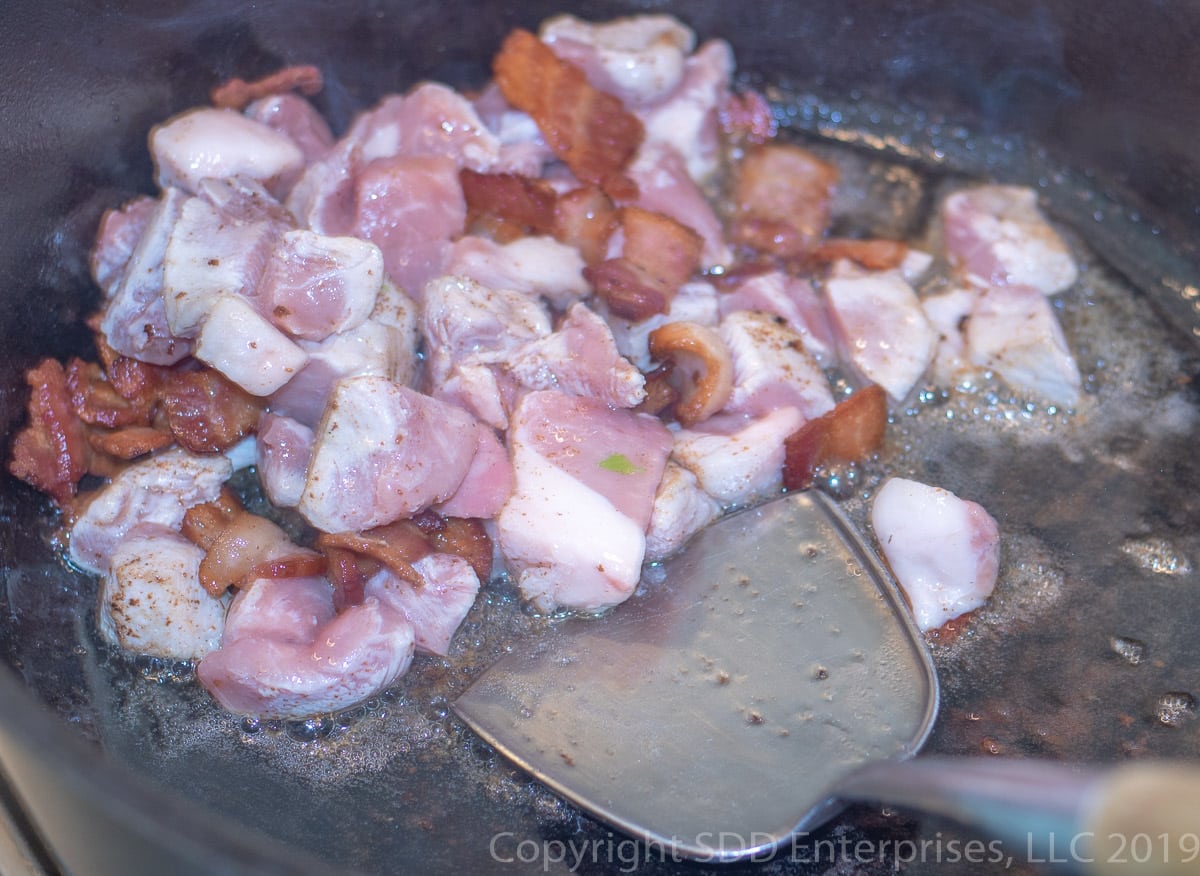
Don’t stir the pork around too much because you want to sear the pork to form a crust and get some fond (brown sticky bits) on the bottom of the pan, but do stir it occasionally so it doesn’t burn. Cook the pork for about 15 to 20 minutes carefully scraping the fond off the bottom as it cooks. This is an important step in building a nice brown color. After about 20 minutes add the andouille sausage and continue to scrape the bottom. Brown the pork and sausage together for about 10 minutes, rendering as much of the fat as possible.
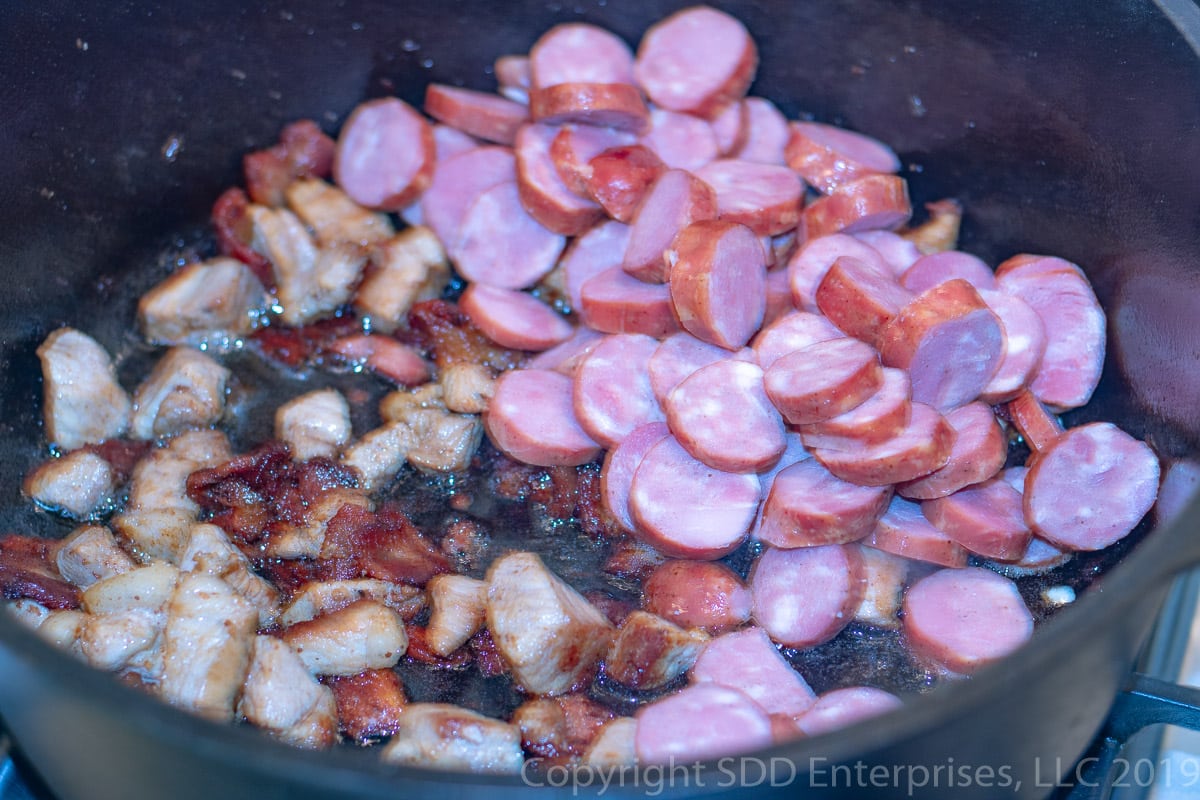
Next, add the chicken. You may need to turn up the heat just a bit as the chicken will start to lose its water. This will lower the temperature in the pot and tend to steam instead of fry. Just keep stirring until it is browned. Another 10 to 15 minutes and you should have a nice batch of browned meat and some nice fond and rendered fat in the pot. Good time for another beer.
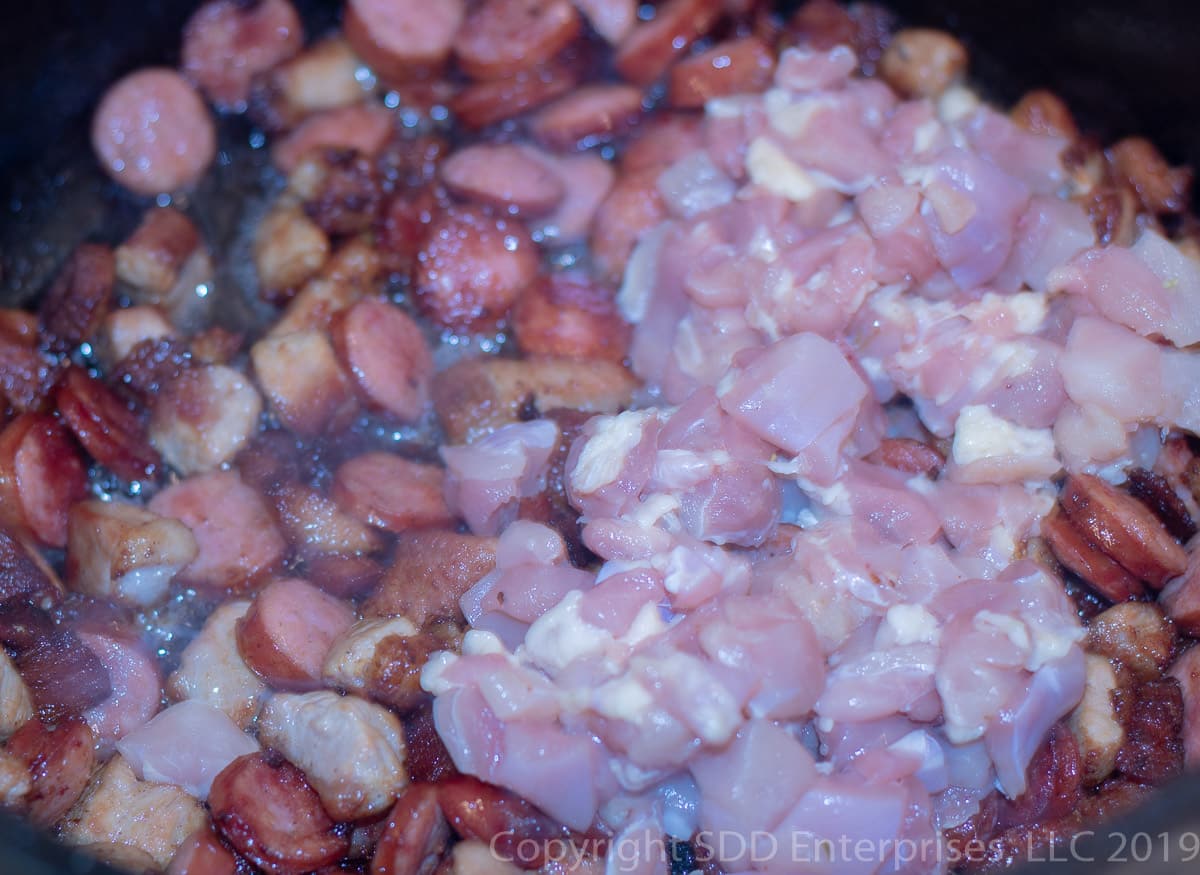
Caramelize the Trinity
What happens in this step: Caramelizing the Trinity will extract the natural sugars in the vegetables. These sugars will provide more deep color and blend perfectly with the flavors of the browned meat. Another layer of flavor.
After the chicken has browned for about 15 minutes, keeping the fire at medium-high, add the Trinity (yellow onions, bell peppers and celery) as well as the green onions. Again, you want some fond to form, but keep an eye on it and stir as needed so that it does not burn on the bottom.
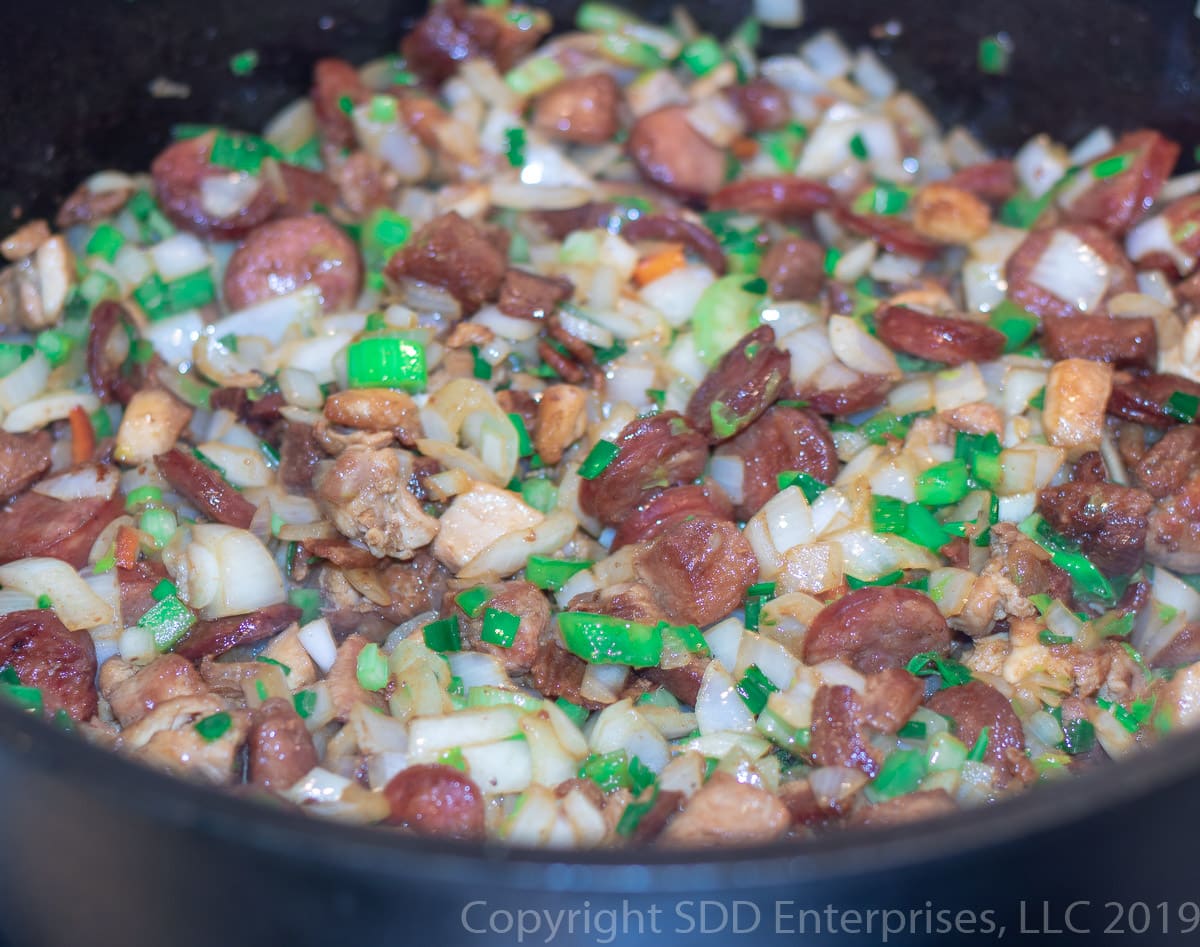
After about 15 minutes, the vegetables should be well on the way to caramelizing. Add garlic and stir for about 2 minutes, then add about half of the Herb and Spice Blend and mix everything together well.
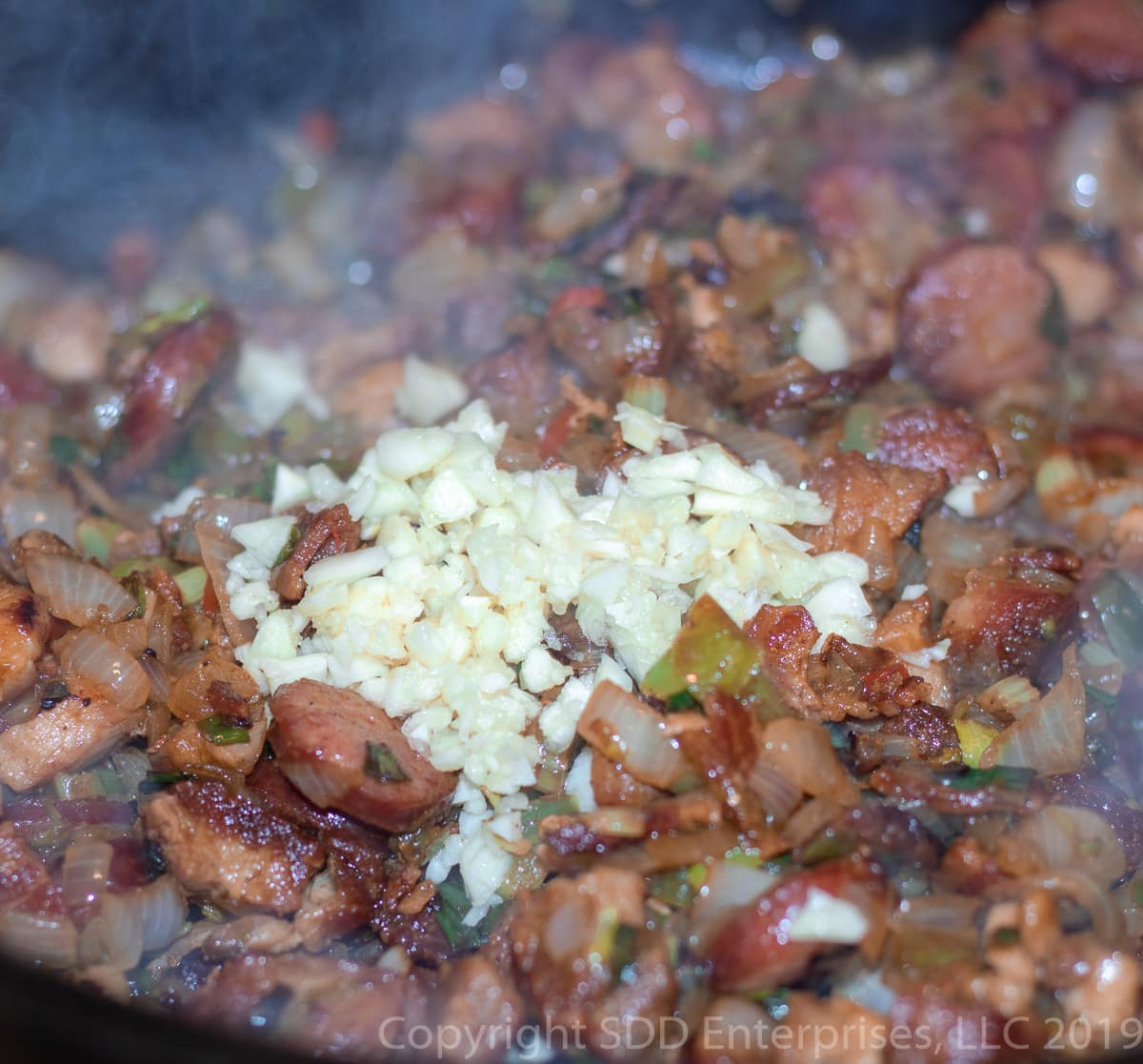
Add the Stock
What happens in this step: The next layer of color and flavor comes from simmering the meats and vegetables, which have been browned and caramelized, in a rich stock. The flavors begin to meld into something new altogether.
Start by adding about ½ cup of stock and use it to deglaze the pot. This helps lift the fond off the bottom, so scrape the bottom thoroughly until all the fond is recovered. Stir this into the vegetables and meats. Next, increase the heat to high and mix in the remainder of the stock. Add parsley and about ½ of the remaining Herbs and Spice Blend.
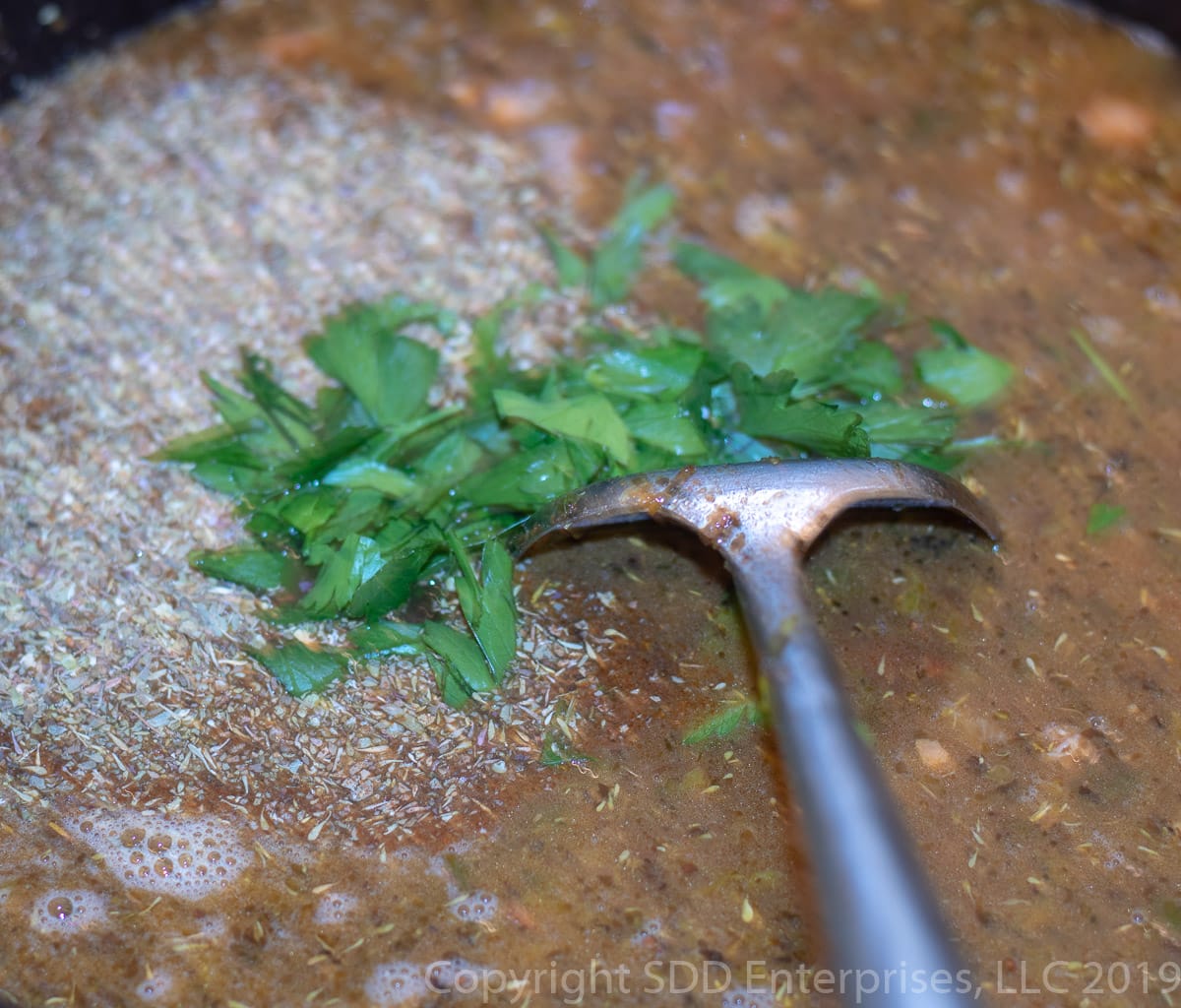
Mix this together completely. Once it begins to boil, reduce the heat to medium-low and simmer for about 15 minutes. This step starts to bring all the flavors together.
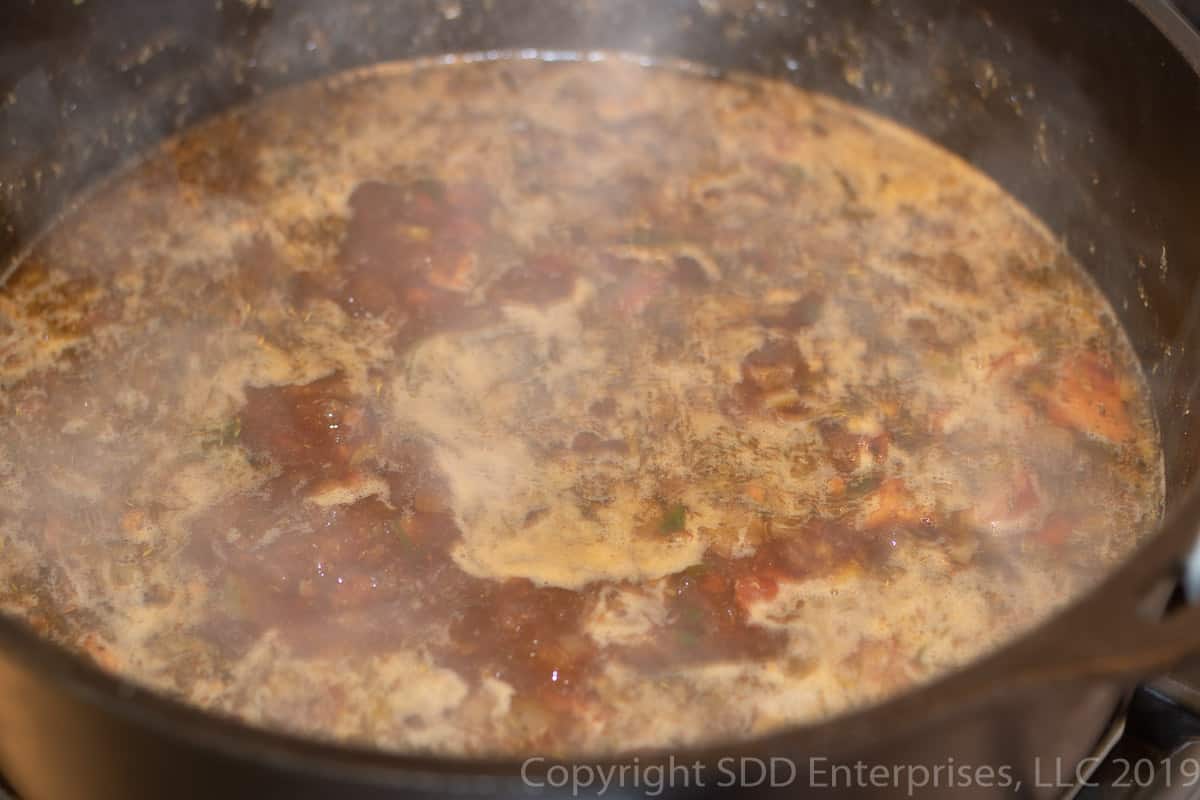
Add the Rice
What happens in this step: This is where we make jambalaya. The rice will cook in the simmering stock, absorbing all this deep flavor. The result will be unbelievable.
It's looking great about now and you're doing great, how’s your beer? After the stock has simmered for 15 minutes, stir in the uncooked rice and mix together well. Return it to a boil, reduce the heat to a very low simmer and cover the pot.
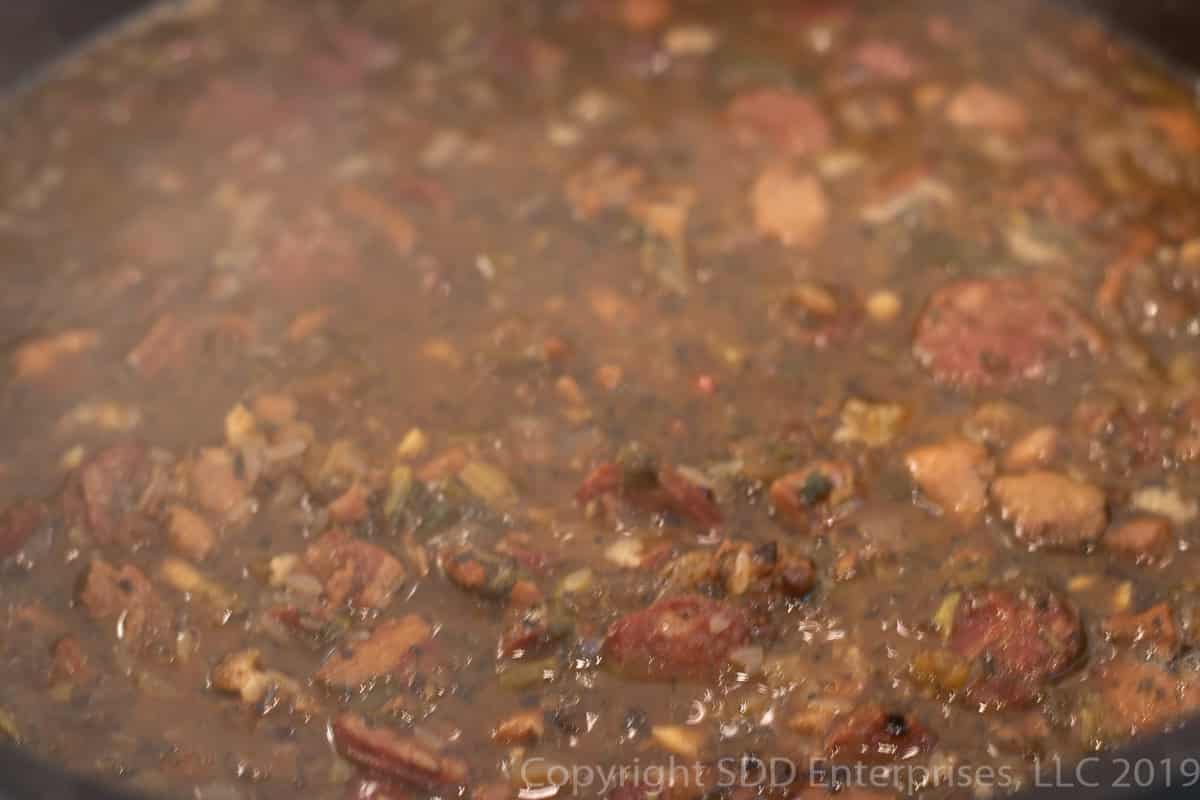
If you don't have a heavy lid, use some aluminum foil to cover the pot then put the lid on top of that. The idea is to take advantage of all the steam coming off the stock. The total remaining cooking time is 30 minutes. You will NOT uncover the pot except one time only and that's at the 15-minute mark to stir the jambalaya completely, scraping off the bottom so it does not scorch; then replace the cover tightly. After a total of 30 minutes (15 minutes after you stirred), taste it-it’s done if the rice is cooked. If all of the stock has not been absorbed, cook it a little more with the cover off; if all the stock has been absorbed but it’s not quite cooked, add a little more stock and cook it covered for another 5 minutes or so. Keep checking like this and it will be done soon.
Now you’ve got a large pot of some classic Cajun Jambalaya that everyone will love. Tweak this recipe to your liking and before you know it you'll be headed to the World Jambalaya Cooking Championship. But before you do that, have another beer.
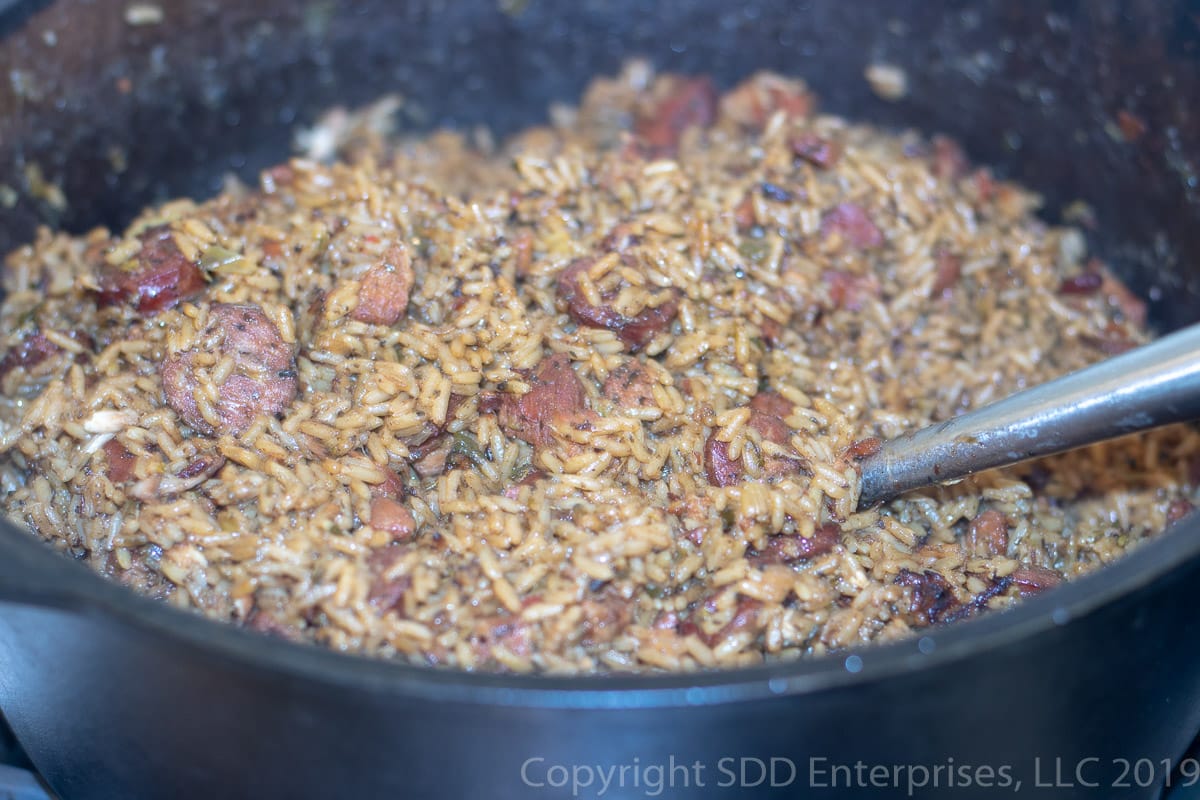
Hints and Tips
The way in which the rice will absorb the liquid is important to know when cooking. I use converted rice, which means that it has been parboiled allowing it to cook just a little faster. This recipe works well with regular rice too and I have done that many times. Whatever rice you decide to use, pay attention to how it absorbs the liquids and make adjustments in cooking time accordingly. It may require just a bit more time for the rice to cook, but if you are checking it at thirty minutes, you will figure that out.
This Cajun Jambalaya has pork, andouille sausage, and chicken as the proteins. Other meats can be used but it's best if most of your meat has a relatively high-fat content. Use a pork butt or country-style pork ribs that have nice fat content. Andouille sausage is a spicy Cajun pork sausage that will definitely influence the flavor profile of your jambalaya. If you can’t find andouille, a nice smoked pork kielbasa will do, the spicier the better. I generally use both white meat and dark meat chicken, but using all chicken thighs is not a bad idea.
Leftover Jambalaya can be kept in an airtight container, refrigerated for 3 to 5 days. You can also freeze leftovers in an airtight container, but rice doesn't really like the freezer so it may come outa little spongy. Defrost in the fridge and reheat in the microwave or on top of the stove in a saucepan with a splash of water or stock.
Jambalaya is different than most other South Louisiana staples. Jambalaya is basically a rice dish with all the ingredients cooked together, gumbo is a soup-like dish that is served in a bowl usually over a scoop of rice. Like Jambalaya, Gumbo may contain chicken, duck, shrimp, oysters...you name it. Jambalaya is similar to Dirty Rice, sometimes called Cajun Rice or Rice Dressing but again, they are not the same thing. Dirty Rice usually includes some ground organ meat (livers, chicken gizzards, and hearts) along with ground beef or pork. Cooked rice is added to the pot as Dirty Rice is cooking, as opposed to Jambalaya that cooks the rice in the stock along with everything else. Dirty Rice is almost always a side dish, while Gumbo can be either an appetizer, a side dish or the main thing. The one thing they all have in common-they use locally available ingredients and are delicious when prepared properly. The popularity of Jambalaya has it showing up on restaurant menus all over the country, but beware....don't trust anything called Jambalaya that is served "over" rice. It may be delicious, but it ain't Jambalaya.
The answer to this question is definitely “Yes”! Like many Louisiana dishes, Jambalaya can be prepared in Cajun or Creole style. Generally, Jambalaya is made with combinations of pork, ham, chicken, sausage, beef, seafood, all sorts of onions, and vegetables cooked down along with the Louisiana staple, rice. The basic difference between Cajun and Creole Jambalaya is in the ingredients. Like most Cajun dishes, Cajun Jambalaya is more rustic and usually contains chicken and pork. Creole Jambalaya, like many Creole dishes, includes tomatoes as well as shrimp, sausage, and sometimes ham. Creole Jambalaya has a red appearance (derived from the tomatoes) and a slight wet appearance. Cajun-style’s cooking process produces a browner and dryer appearance. Done properly, Creole Jambalaya is not too wet and Cajun Jambalaya is not too dry. No matter if it's Cajun or Creole style, it's only authentic if the proteins and vegetables are cooked with the rice, allowing the rice to absorb all those delicious flavors that build along the way!
Like most South Louisiana dishes, the ingredients and quantities don’t have to be exact but should be somewhat proportional. To make an outstanding Jambalaya, the ingredients are not as crucial as the process. If there is an ingredient you like-use more; if there is something you don’t like-use less or substitute. Maybe Uncle Stinky doesn't like celery...so cut back on the celery if you want (or don’t invite Uncle Stinky!) I like to be on the high-end of the veggie quantity-and to me the onions reign supreme. If the crowd isn’t so big, this recipe can be easily cut in half or doubled for a larger crowd.
A flavorful and nicely colored Cajun Jambalaya is the result of the process. It does not take an extremely long time to cook a good jambalaya, but it must not be rushed. The step of browning and rendering of each meat, in a progression of fattiest to leanest, lays the foundation for the rich flavor and color you are looking for. By starting this process in bacon grease...well, you get the point. Slowly caramelizing the trinity in the meats develop even more flavor, then adding the Herbs and Spices in stages while slowly simmering the vegetables and meats in the chicken stock before adding the rice, builds an unbelievably flavorful base which the long-grain rice will absorb. Two important things about the rice: DO NOT uncover the pot once you get the rice simmering except to stir it ONCE and be careful not to overcook it..a soggy jambalaya is a sad jambalaya.
Whether you are looking for a side dish or a sauce, here are a few recommendations from Sweet daddy D:

If you make this recipe:
- Tell us about it in the Comments section below
- LEAVE A RATING ON THE RECIPE-worthy of 5-Stars?
- Questions or Comments? that’s the place!
- SIGN UP FOR OUR EMAIL UPDATES so you don't miss anything!
- Post a picture and share it with your friends on our Social Media:
Here are some products that you can use in making this Cajun Jambalaya:
Andouille Sausage, Chicken Stock, Long Grain Rice
Dutch oven, Chef's knives, Cambro prep bowls, Glass prep bowls, Measuring cups, Glass measuring cups, Measuring spoons, Cutting boards
Yeah You Right!
Recipe
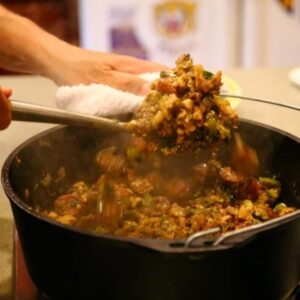
Classic Cajun Jambalaya
Here's What You Need
- 4 tablespoons bacon grease or about three slices of bacon
- 1 pound pork shoulder or boneless ribs
- 1 pound Andouille Sausage sliced in medallions
- ½ pound boneless skinless chicken breasts diced
- ½ pound boneless skinless chicken thighs diced
- 3 cups Yellow Onions chopped
- 1 cup green onions chopped
- 1 to 1 ½ cups green bell peppers chopped
- ½ to 1 cup Celery chopped
- 5 or 6 cloves garlic minced
- 3 to 4 tablespoons parsley choppped
- 7 cups Chicken Stock plus a little more in reserve
- 4 cups long grain rice uncooked
Herb and Spice Blend
- 2 tablespoons Creole seasoning
- 2 tablespoons Oregano
- 2 tablespoons Basil
- 1 tablespoon Thyme
- • Kosher salt and pepper to taste
- • Cayenne pepper to taste
Here's What You Do
- Prepare all your ingredients and set aside in their own small bowls: Cube all your meats; chop the veggies-you want about 5 to 6 cups all together; chop your garlic.
- Mix the herb and spice blend (except the salt which you should add separately) in a bowl; set aside.
- In a cast-iron Dutch oven or other heavy pot with a lid, melt the bacon grease over medium heat. Brown the sausage for 10 to 15 minutes, carefully scraping the brown sticky bits off the bottom as it cooks.
- After about 20 minutes add the pork; brown with the sausage for about 15 minutes. Continue to scrap the bottom of the pan. Render as much of the fat as possible.
- Add the chicken to the pork and sausage in the Dutch oven. Turn up the heat just a bit as the chicken will start to lose its water. Keep stirring. After 10 to 15 minutes you should have a nice batch of browned meat and some grease in the pot.
- Add the Trinity (yellow onions, bell peppers and celery) to the Dutch oven with the meat; stir until they are mixed well with the meats. Brown for about 15 minutes, stirring as needed not to let them scorch on the bottom of the pan. You want them to cook down and begin to caramelize.
- After about 15 minutes add the garlic and stir until aromatic-about 2 minutes or so. Add about half of the Herb and Spice Blend and some kosher salt, stir it up good.
- Now you will add the stock. Start with just about a cup or so at first and use it to deglaze the bottom. Add the parsley and about half the remaining Herb and Spice Blend-save a little to add at the end if you think you need it. Now add the remaining stock and bring to a steady simmer for 15 minutes, uncovered.
- After 15 minutes add the rice, stir together and return to a full boil before reducing the heat to a simmer. Cover the pot tightly and cook on low for a total of 30 minutes. Do not uncover the pot except one time-at the 15 minute mark to stir the jambalaya completely-scrapping off the bottom so it does not scorch; replace the lid to cover tightly.
- After 30 minutes (15 minutes after you stirred) taste it-it’s done if the rice is cooked. If all of the stock has not been absorbed, cook it a little more uncovered; if all the stock has been absorbed but it’s not quite cooked, add a little of the stock you reserved and cook it covered another 5 minutes or so. Keep checking like this and it will be done.

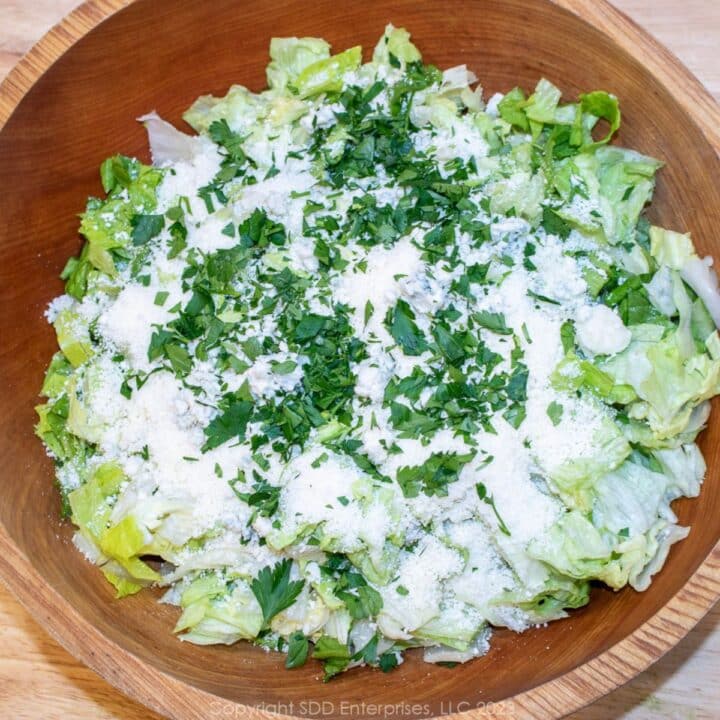
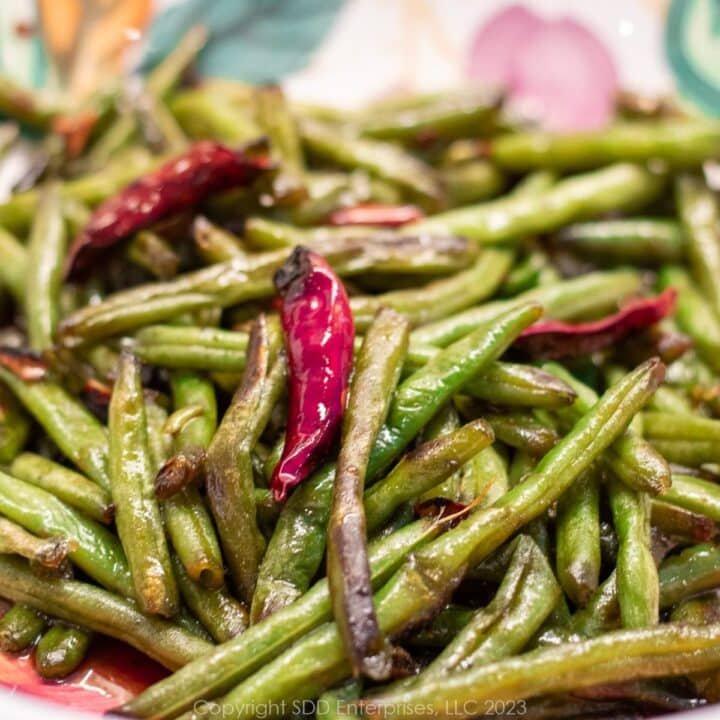
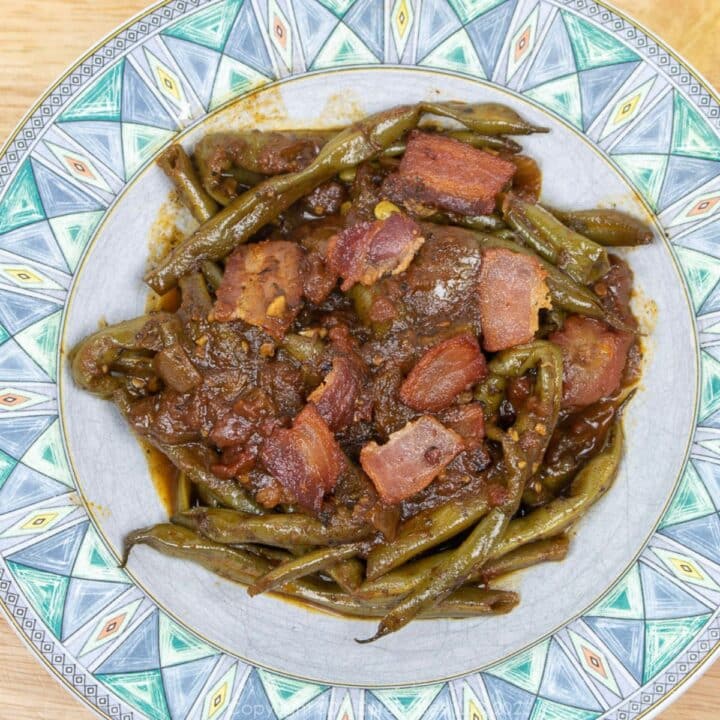
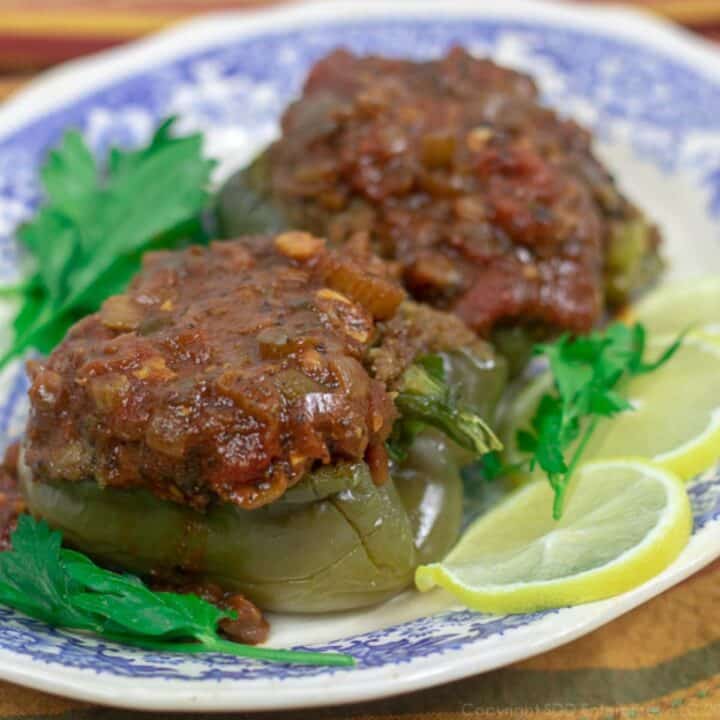
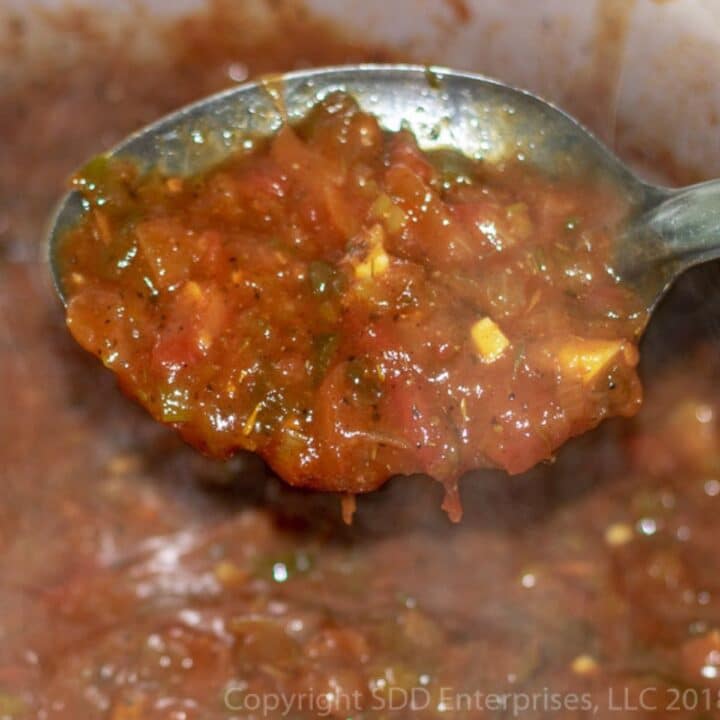



Patrick Miller
Enjoy your recipes as you know. Can I add 2 pounds of shrimp to this jambalaya at the very end?
Sweet Daddy D
Hey Patrick. Yes, you can add shrimp to this recipe at the end. I've had readers tell me they do that and it turns out well. You've probably seen my Creole (Red) Jambalaya recipe, which calls for shrimp. Let me know how it turns out.
S k Argila
I am a born and raised Mississippi girl with lots of Cajun family all over the south, but for the last 20 years I've been transplanted ti NJ to be with my husband. I've adapted in all ways but was missing MY food I remember from home (he's Italian and they have their own very solid food traditions). Thank good I have found your site! I made this recently for us and for my daughter to share with work friends and it was amazing. Flavorful, delicious, unctuous and just plain good. Exactly like I remember sitting around cabins eating with family and friends down home. Yes it's work to get there, but the pay off is more than worth it. You have done an amazing job with your instructions, explanations of each step of the process and what should be happening and pictures. Even my daughter thought this was easy to follow and she mostly only bakes! Thank you so much! I've got a list of all the recipes from your site to start making again! You've inspired me to bring my home cooking to share in NJ!
Sweet Daddy D
Thanks for your kind words, S k Argila! I know what you're going through having lived on the East Coast for 20 years. I had so much fun cooking and introducing South Louisiana food to all my friends. It's great to be home now! I hope you find more recipes you like. I can't wait to hear about them.
Brittney Bordelon
This time, all I have is medium grain rice. Will this change the cooking time or eater ratio? Love this recipe! Thanks for sharing, everyone always loves it!
Sweet Daddy D
Hey Brittney. That should not have much of an effect on the cooking time or the ration. When you stir it after 15 minutes of cooking covered, give it a taste. See what you think about how it's cooking. After another 15 minutes, test it again and decide if it needs more time or not. I doubt it makes a difference. Let me know how it comes out! Emjoy!
Audrey
This was amazing! It can be hard to find a good Cajun jambalaya recipe. My mom told me this was the best jambalaya she'd ever had, and she used to live in New Orleans, so I would say that is quite the compliment. Only thing I did differently was use a little Chef Paul Prudhomme's poultry magic on the chicken before I threw it in the pot. For the creole seasoning, I used half Slap ya Mama and half Tony's "more spice."
Sweet Daddy D
Thanks so much, Aubrey. That is a high compliment. Thanks to Mom, also. You should give my Creole Seasoning a try, I'm a little biased but I think it's better than those other guys. There is a link on the Jambalaya article and if you use discount code FYHAB10, you'll get a discount on your order. If you live around Covington, LA, send me an email at [email protected] and I'll let you know where to find it in the grocery. Thanks, thanks, thanks!
Amber Barber
THE best authentic jambalaya recipe. As a Baton Rouge native, I was determined to learn how to make this at home. Now I’d like to conquer pastalaya. Is there a way to modify this recipe for noodles instead of rice?
Sweet Daddy D
Thanks, Amber, what a nice compliment! If you get a chance, throw 5 Stars up there so others know you liked it. I don't have a completed recipe for Pastalaya, but I have been working on developing one on and off for a while. I think basically follow the Cajun Jambalaya recipe except use 1 pound of pasta (I use regular spaghetti broken in two) and the stock should be 4 to 4.5 cups. Simmer it covered for 15 minutes or until the liquid has been absorbed. If the pasta is cooked to your liking (mine is al dente) and almost all, or all of the liquid is gone you are ready. See how it turns out and make your adjustments from there. Good luck, let me know how it turns out.
Leslie M Anderson
Love the recipe , details and history.
Born Cajun and never realized the Spanish contribution to Jambalaya. Love reading about the “Team effort” of Jambalayas origin!
(Spanish, African and Cajun)! Awesome read and keeper! Thanks!
Sweet Daddy D
Thanks, Leslie. I appreciate you reaching out. Thanks for trying the recipe and I'm so glad you liked it.
Steven Merola
made it for the first time, followed the recipe exactly, had 2 neighbor couples over, although the recipe says 25 servings there wasn't that much left. the neighbors each took a quart container with them, no leftovers. thanks so much go to explore other recipes from sweetdaddy-d
Sweet Daddy D
Thanks for trying the recipe, Steven. I'm glad it worked for you and can't wait to hear what you try next. Thanks for taking the time to reach out and the 5-Stars!
Cara Picolo
This recipe is life-changing. Came out absolutely perfect. Thank you for the recipe.
Sweet Daddy D
Yeah You Right, Cara! What a wonderful compliment. Thanks for giving the recipe a try, so glad you liked it.
Angela Lindsey
Simmering it as I type this. I tasted the broth right before I put the rice in and it tastes almost identical to what I remember the jambalaya shop in Gonzales Louisiana tasting like.. I really hope the whole thing tastes as good as the broth does. I made chicken and sausage only. It's my favorite. I'll come back and let you know.
Sweet Daddy D
Great, Angela. Thanks for giving it a try and I can't wait to hear what you think of the finished product.
Charlie
This looks great!!! I am saving this to make it some weekend soon. What do you think of scooping out the pork and searing/browning whole boneless skinless thighs in the rendered fat? Then chopping up the chicken and adding everything back in then resuming the recipe? Would get some good color on the chicken too. My only concern would be burning the fond.
Thoughts?
Sweet Daddy D
Hey Charlie. Thats pretty much the way I do it except I cut up the chicken first. The recipe calls for white and dark meat but most of the time I only use thighs. I'm not sure what removing the pork from the pot would accomplish. I brown the meat in order of fat content; first the pork, then the sausage, and then the chicken. The chicken always seems to render some water, so don't overcrowd the pan, stir it occasionally and let the fond build. If you watch it fairly closely the fond won't burn. That fond helps give it the color you want. That being said, doing it the way you describe would also work, I just don't think it would be necessary to remove the pork. Let me know how you end up doing it and how it turns out. Experimentation is good!
K Fowler
Great recipe, but I had to add 3 cups of water and cook the rice for over an hour to get the crunch out of it. Used ham instead of the pork and added shrimp and tomatoes. Turned out very good.
Sweet Daddy D
Hey Karl, thanks for trying the recipe. What kind of rice did you use? Maybe the heat was too high and the water evaporated before it could absorb? Sometimes I've had to cook it a little longer than 30 minutes but not to the extreme you had to go. I love ham, shrimp and tomatoes in Jambalaya. Check out my Creole Jambalaya recipe...it sounds like where you ended up. Thanks for reaching out...I'm glad it turned out well.
Abigail Narcisse
Recipe was outstanding
Sweet Daddy D
Thanks, Abigail. Glad you liked it.
Erich
Just made this recipe with some minor changes in the process. I usually make a creole N.O. style with tomato but have been working on perfecting a Cajun brown style. The only change I made to the recipe is the night before I’m made it I cooked a 4-5lb whole young chicken in a pot with bay leaf, bottom on the celery stocks and any onion ends I may have to make a stock. One example the chicken is done I strain the broth and set it aside to make the rice in. I let the chicken cool then pull the meat off the bone. I cook 2 1/2 cups rice in the stock and set the rice and chicken aside for when I put everything together. I do this to try and keep the rice from being as sticky.
Turned out delicious though I may tweak the seasoning a little next time. I’ll probably try cooking the rice in the Dutch Oven as called for in this recipe next time too just see how it turns out. I think it will pick up the caramelized goodness on the bottom of the pot better. My rice didn’t brown up as nicely as I would have liked but the flavor is excellent. Made this for LSU Gameday and it’s a big hit! Thanks for sharing your recipe.
Sweet Daddy D
Hey, Erich. Thanks for the comments. I appreciate you trying this recipe. Making homemade stock is great idea. I have always gotten great flavor and color by building it in stages...slowly frying the meat, then the vegetables, then simmer it all in the stock. Cooking the rice in the stock helps it absorb all that flavor and color developed during the process. I’m glad you liked the recipe. Give my Creole Jambalaya a try and let me know what you think. Thanks again.
Ann
I probably shouldn’t give it a review yet since I’m not quite done. It’s on the simmering stage with the broth right now. But I tasted the broth and it tastes and smells so incredible! All that’s left is to add the rice in about 10 minutes. I prepped everything last night and so this was incredibly easy. I did some other stuff in the kitchen in between stages. And I’m on my second beer, btw.
Sweet Daddy D
That's great, Ann. Prep the ingredients and prep the cook. Second beer and haven't gotten to the rice yet? You still have time for a third. Thanks for reaching out. I hope you and your family enjoy the Cajun Jambalaya.
DaveB
I'm looking for some clarification.
This is the cajun recipe, but we are supposed to use creole seasoning?
If that's true, is there a list of ingredients to make the creole seasoning, or just find a brand off the shelf?
Thanks in advance
Sweet Daddy D
Hey Dave. Creole seasoning or Cajun seasoning, while not exactly the same, are somewhat interchangeable. There are many commercial options available. Tony Chachere or Slap Ya Mama are popular brands. I make my own. Emeril has a good recipe that you can modify to your own preference. I will email it to you. Thanks for the question.
Carolyn
The instructions were not complicated and spot on. Turned out really good which is not always the case when making Jambalaya.
Sweet Daddy D
Fantastic! Thanks, Carolyn.
linda k. fineout
Your recipe sounds wonderful and I will make it. I have had it with shrimp. Have you? When would I add it to your recipe or is this a no no?
Sweet Daddy D
I would normally add shrimp to a "Creole Jambalaya" which is only slightly different and also has some tomatoes, but there is no reason you can't add shrimp to this recipe. Season the shrimp with some creole seasoning and add them for the final 15 minute period right when you give it a stir. I'd love to hear how it turns out. Thanks, Linda
Mike
Best home made Jambalaya I have ever made! Thank you Sweet Daddy D!!!
Sweet Daddy D
Thanks, Mike. I appreciate you trying it and glad you liked it!
Anna
I enjoyed reading your posts and will definitely tru the Jambalaya (both Cajun and Creole).
I’m from Lafayette and have cook these foods for many many years. I live in California and don’t like the ingredients that I have to use, because I’m so used to having fresh seafood and Louisiana andouille and smoked sausage.
Nevertheless my dishes are delicious.
I’m looking forward to using yours.
Sweet Daddy D
Hey, Anna-great to hear from you. I know all about not having the best Louisiana ingredients after living in Maryland for so long. I love Lafayette and I'm sure you miss it. I'll be publishing my Creole Jambalaya recipe soon. Thanks for reaching out and I hope to hear from you again.
Sue D
Looks delicious! It’s getting cool in Indiana again, so the big pot will come out this weekend!
Sweet Daddy D
Yeah You Right! Hope you give it a try.thanks for the comment!
H-Man
This is the real thing! Had this at a game party and its great. Using boneless chicken thighs is a great idea, and I liked the mix of white and dark meat. I live away from Louisiana, but the taste of this recipe reminded me of times spent in Gentilly (N.O.).
Sweet Daddy D
Thanks, H-Man! This is great on game day and I hear its Chilly in Gentilly!
Jane
Wonderful
Sweet Daddy D
Thank you!